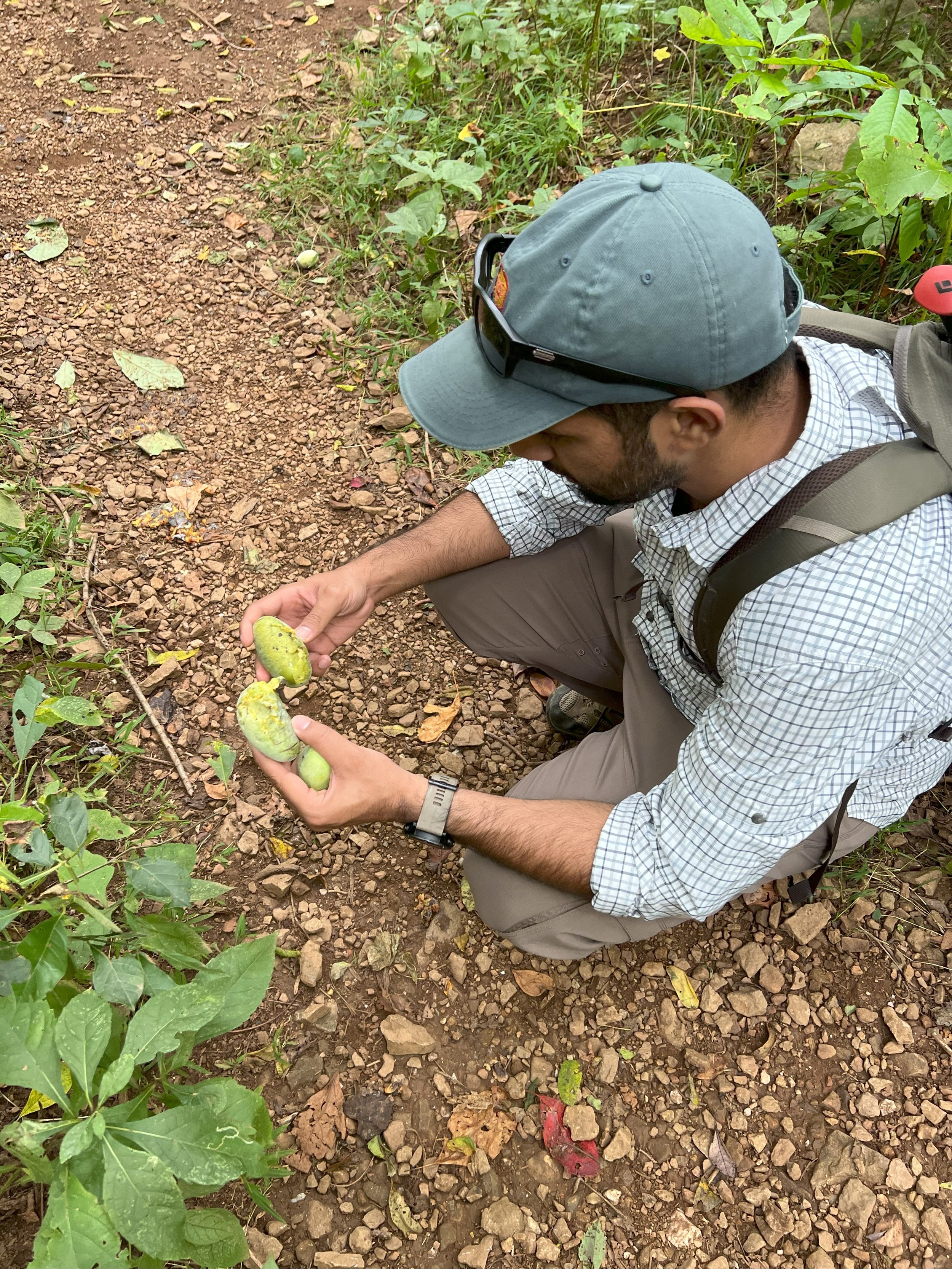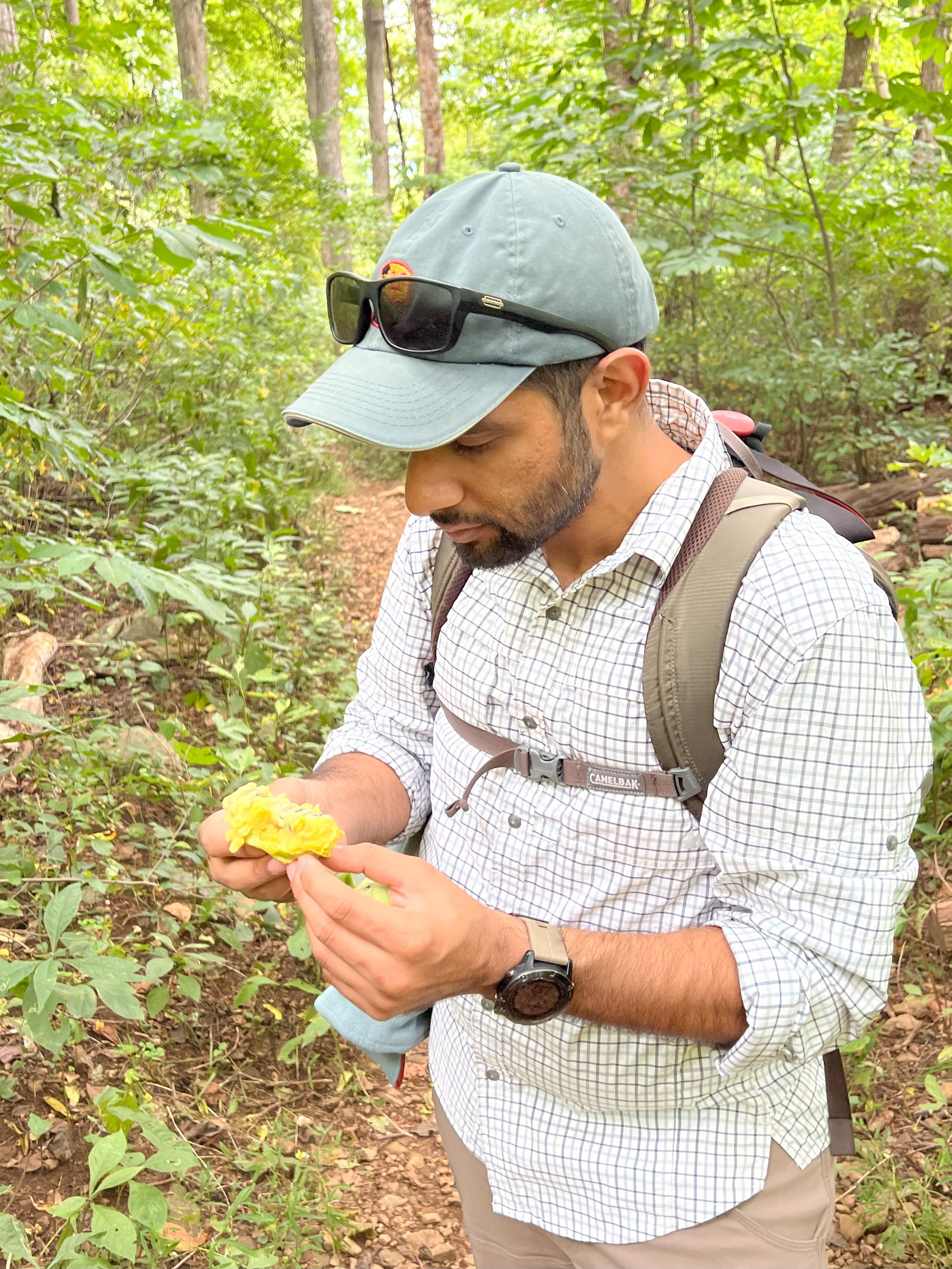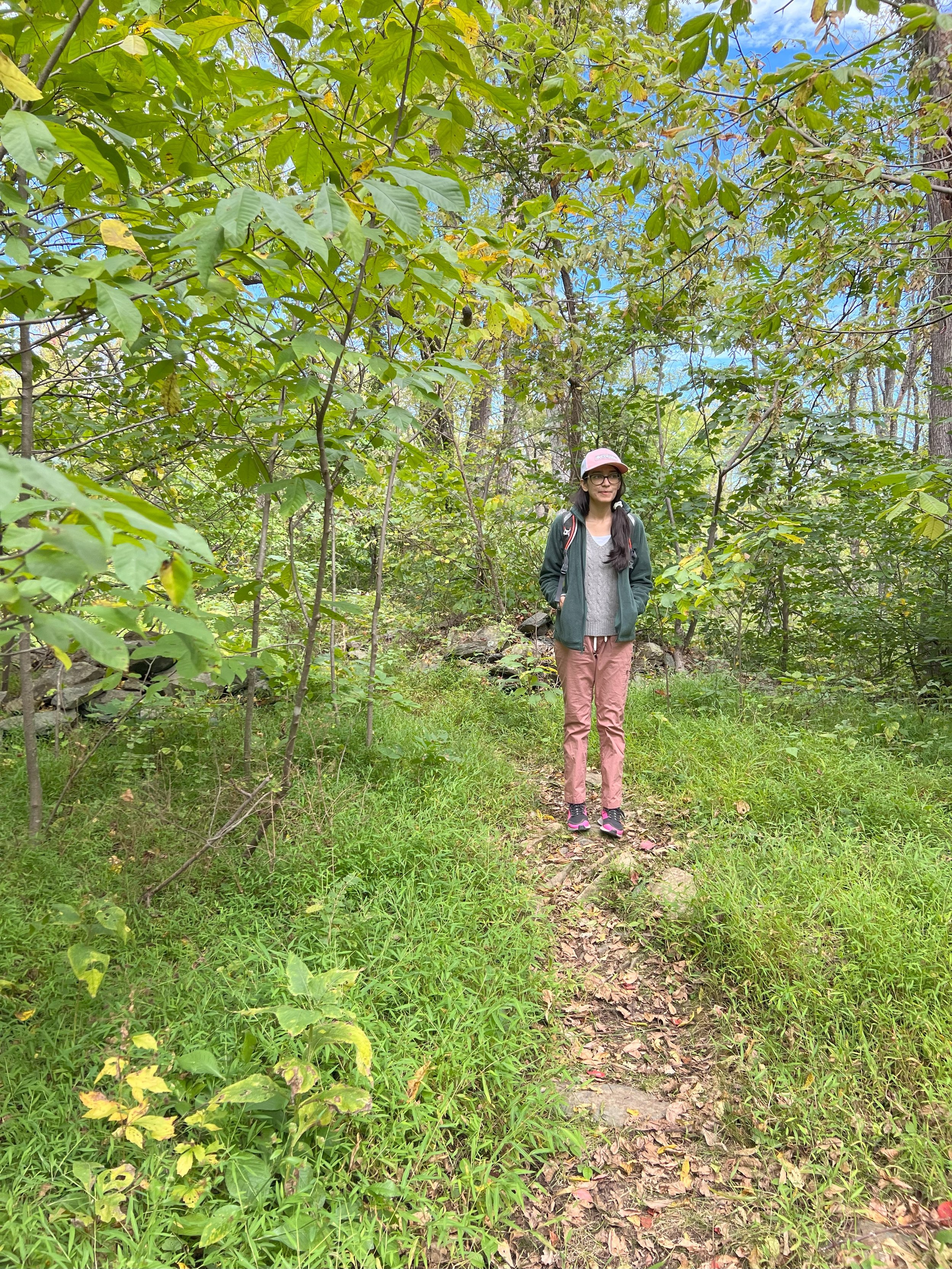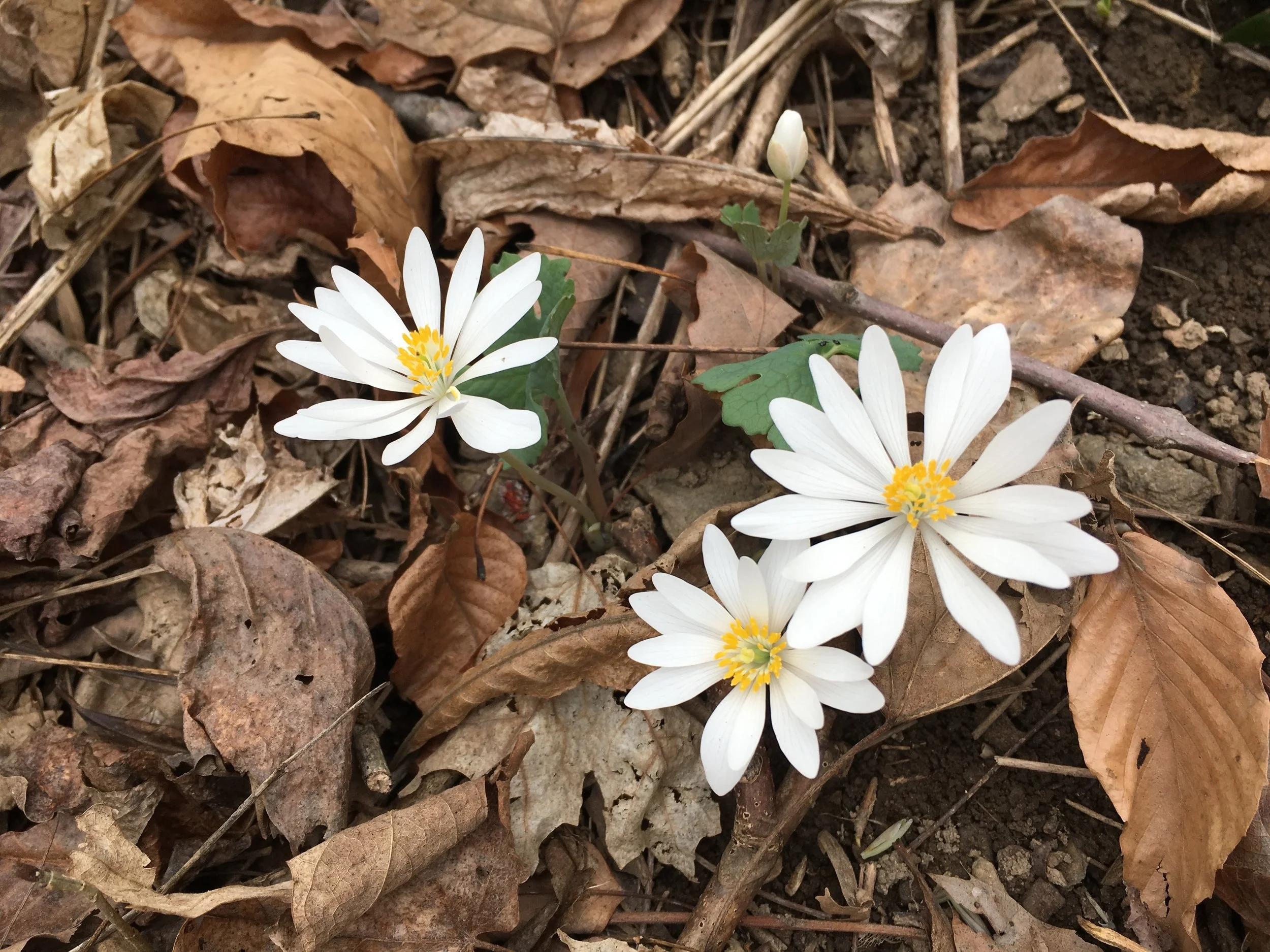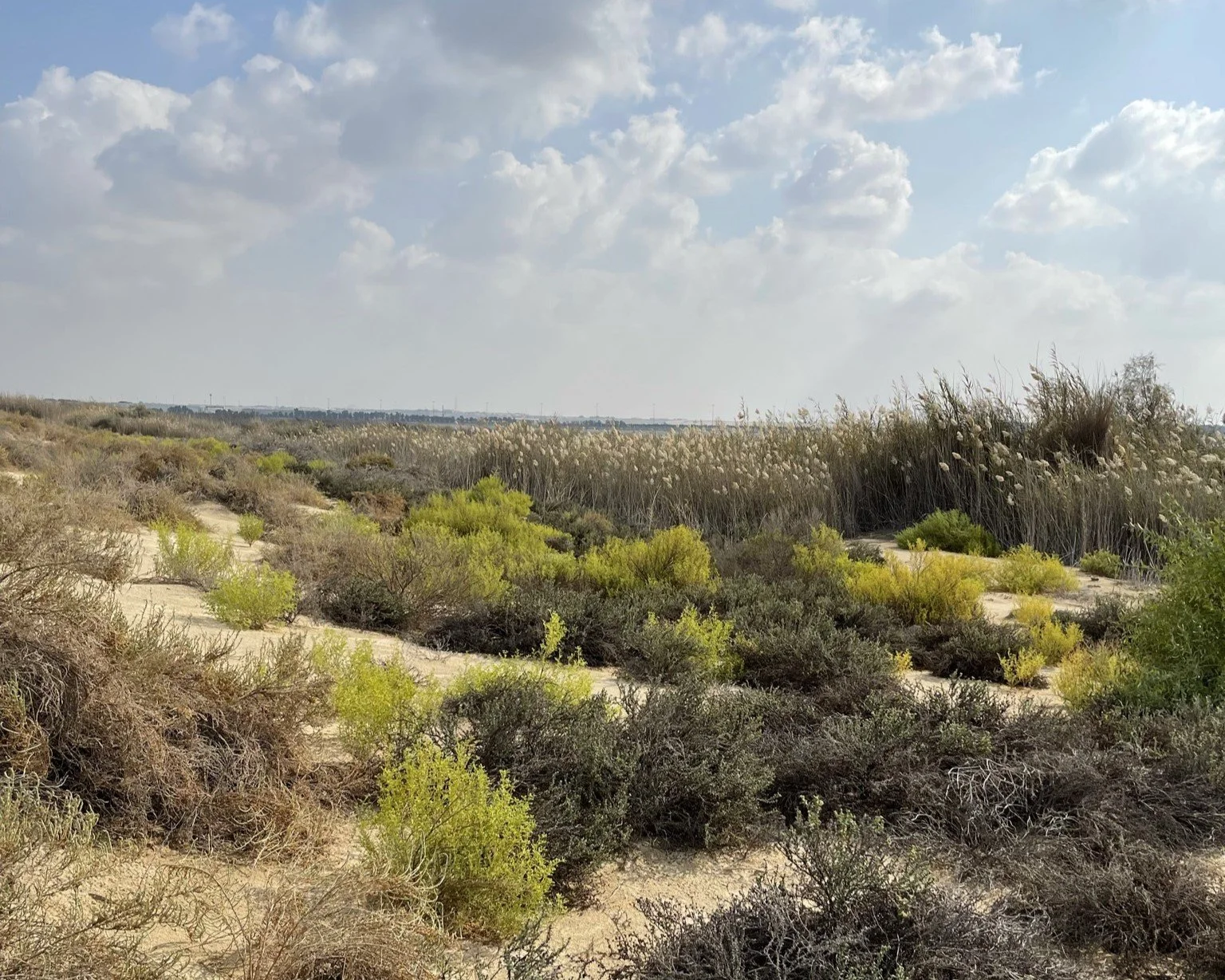Foraging for Paw Paw

Pawpaw
Asimina triloba
For a few short but sweet weeks in August and September, you can saunter through Virginia’s woodlands and forage one of North America’s best native fruits.
The American pawpaw (Asimina triloba) is a unique fruit native to the eastern United States and parts of Canada. It's often described as North America's largest indigenous fruit and is notable for its exotic, tropical flavor, which is a surprising characteristic given its temperate origins. The pawpaw fruit resembles a green, oblong mango or a large, plump banana and typically measures 3 to 6 inches in length. Its skin is thin and smooth, enclosing a soft, custard-like, yellowish flesh.
One of the most distinctive features of the pawpaw is its taste, which is often likened to a blend of banana, mango, and melon, with subtle notes of vanilla or even custard. Inside the fruit, there are several large, brown seeds, arranged somewhat like the seeds in a melon.
Pawpaws grow on small, understory trees in the Annonaceae family, which is more commonly associated with tropical regions. This makes the pawpaw an interesting botanical anomaly in its native temperate forests. The tree itself is relatively small and deciduous, with large, drooping leaves that turn a striking yellow in the fall.
A light shake of the trunk or a tap from a hiking pole on a fruit-laden branch will release the ripened fruit. But try to catch them before they hit the ground, as they are soft and will split open easily. Once bruised, they will really only last a few hours.
Not only is the pawpaw prized for its unique flavor, but it's also valued for its nutritional benefits. It's rich in vitamins, minerals, antioxidants, and has high protein content compared to other fruits. Its history includes use by Native American tribes and appreciation by early European settlers, but despite this, it remains relatively unknown and underutilized in modern American cuisine.
The fruit's rarity in commercial markets is partly due to its short shelf-life and delicate nature, making it difficult to transport. However, it has been gaining popularity in recent years among local food enthusiasts, foragers, and gourmet chefs, who celebrate it for both its taste and its connection to American heritage.
Storing Pawpaw
I’ve had the best experience scooping out the flesh and storing it in an air-tight container in the fridge and it lasting for about a week. Something about how easily the skin bruises triggers the breakdown of everything inside when left whole.
The custard-like pulp is delicious, just like that, or can be used in breads, ice creams, and other desserts.
Pawpaw Seeds
Pawpaw seeds sorted and dried; ready to be planted in the garden.
I am an avid hiker and amateur naturalist. I hike to satisfy that persistent curiosity of what of nature’s wonders lies just beyond the next bend.


